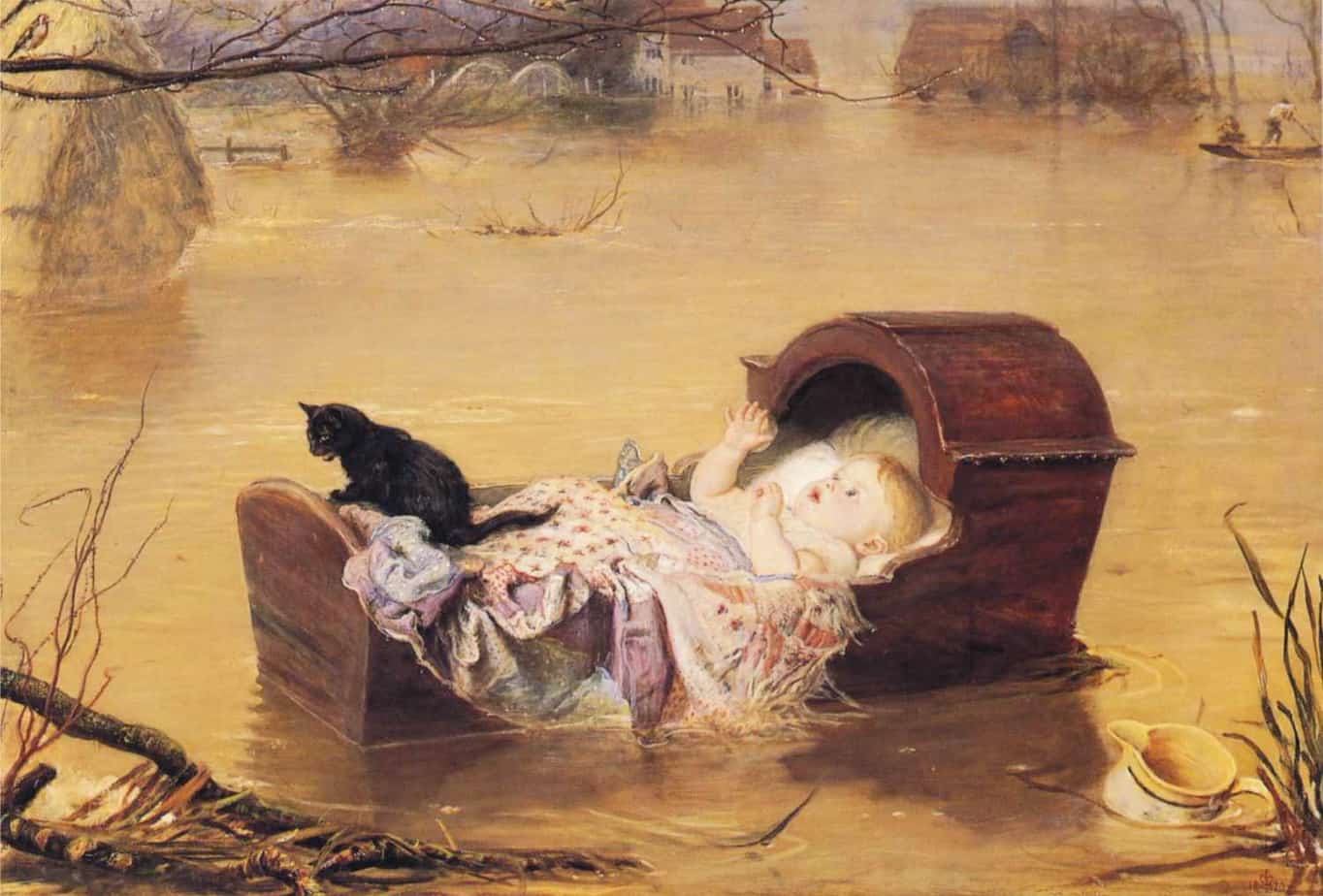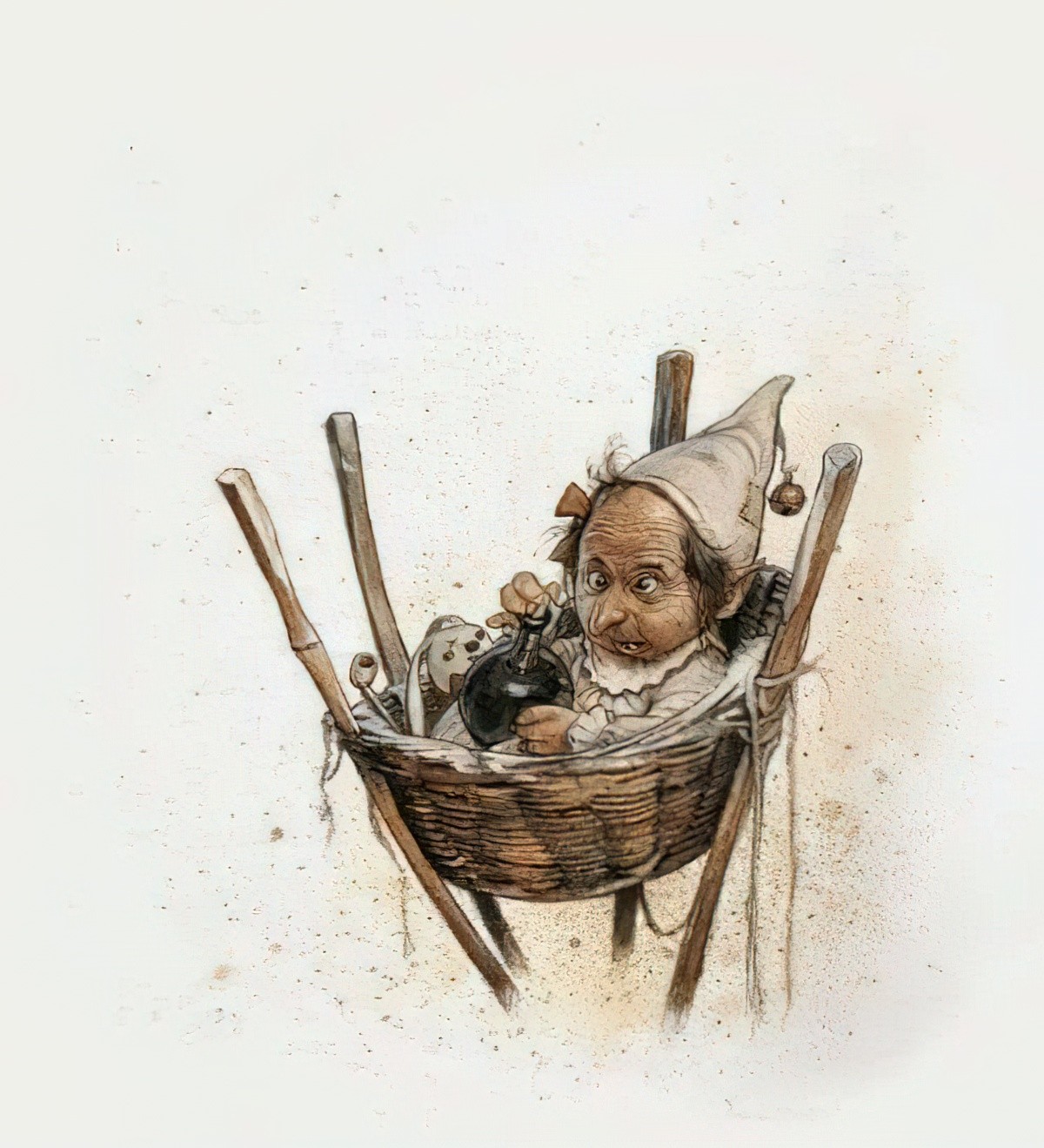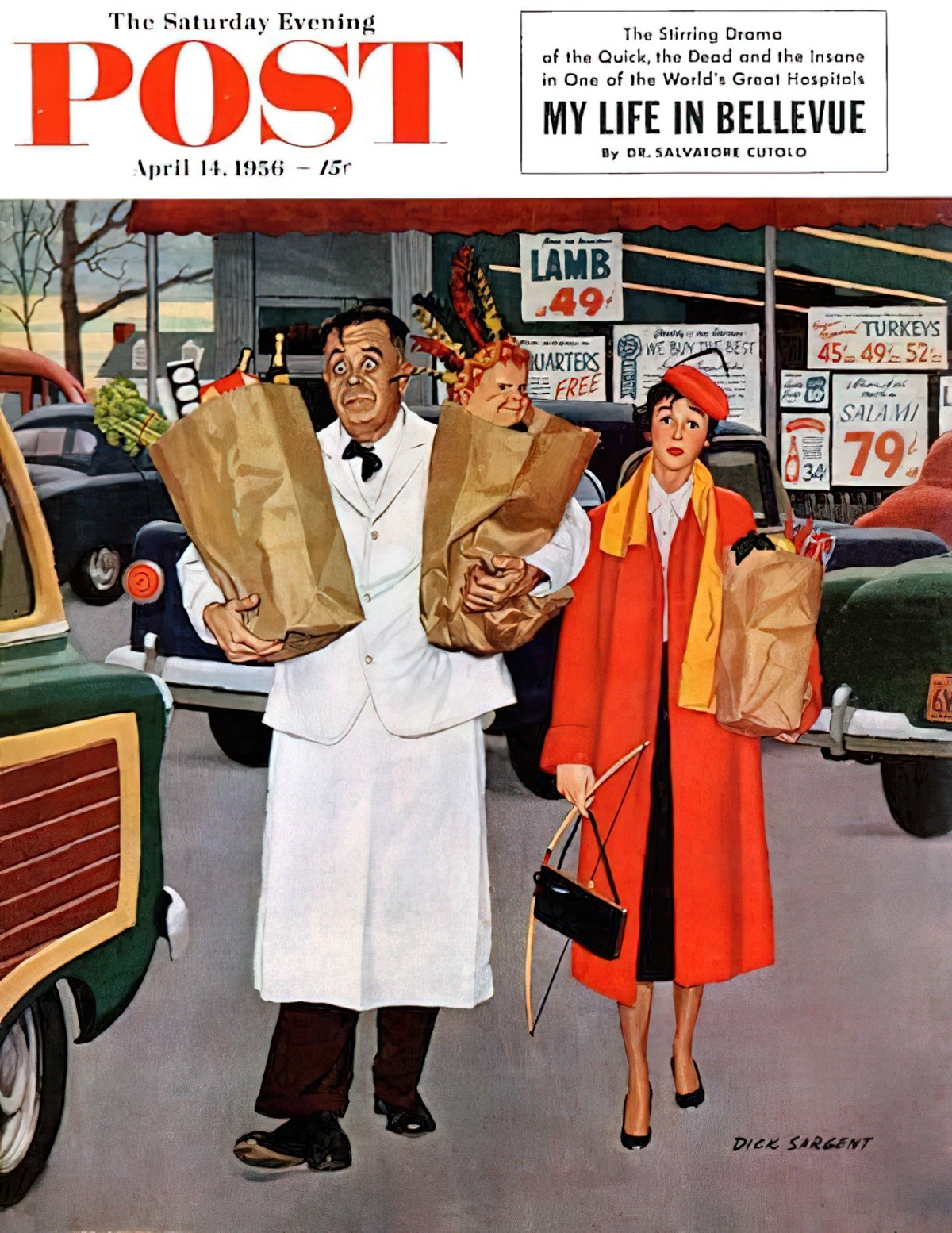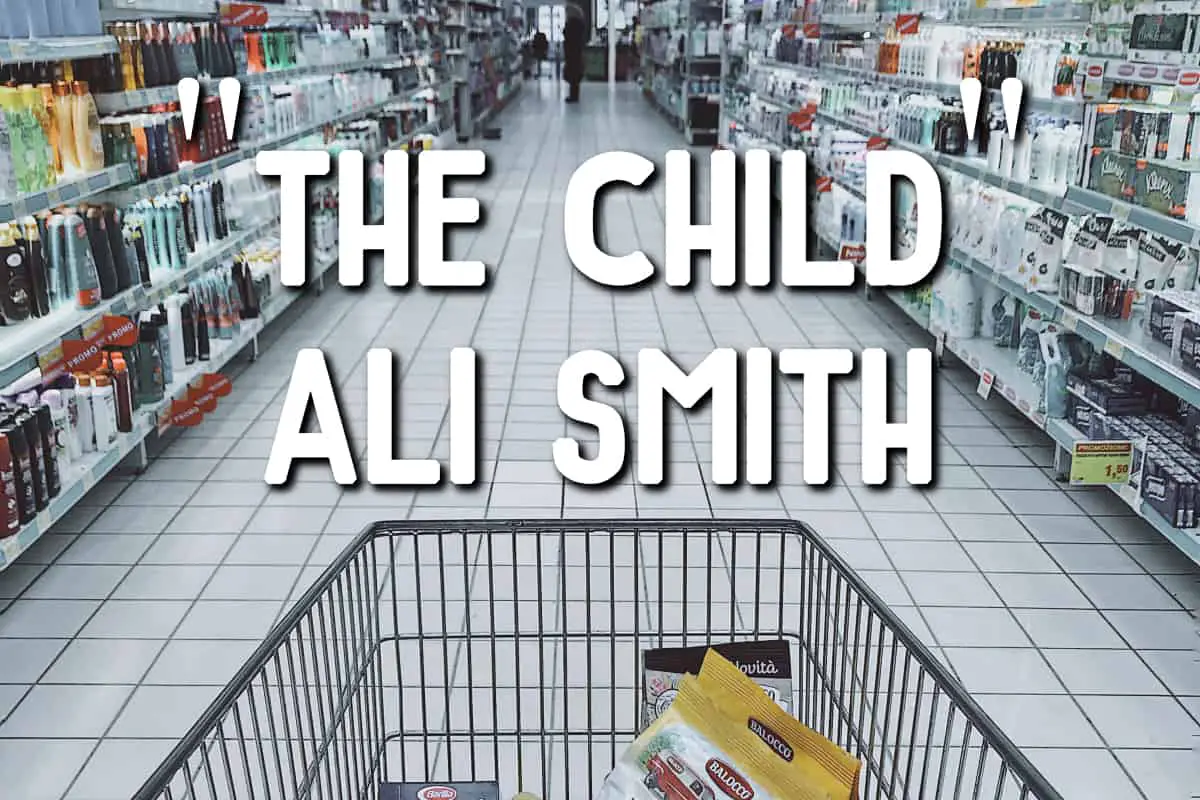Short stories are as powerful as novels. In long hindsight we remember a novel about as well as we remember a short story, yet the short story took far less time to read in the first place. “The Child” by Ali Smith is one of those shorts which has stayed in my mind more vividly than many novels. Smith provided me with images which recur frequently — when I see a child in a supermarket trolley, or when my child comes out with something new and foul-mouthed, or when kids are being assholes at the shops. If you would like to be similarly disturbed, the full text of Ali Smith’s “The Child” can be found here.
THE TROPE OF THE ABANDONED CHILD

Now for a bit of history. The story of the unpleasant toddler passed from home to home is very old. “The Bird Phoenix” is a lesser known tale from the original Folk and Fairy Tales of The Brothers Grimm:
One day a rich man went for a walk along the river. All at once he saw a small casket swimming by. He grabbed hold of the casket, and when he opened the cover, he saw a small child lying inside. So he took the child home and had him raised in his house. However, the rich man disliked the boy, and one time he took the boy with him in boat on the river. Once the boat was in the middle of the river, he swam to shore, and left the child alone in the boat. The boat continued floating down the river until it passed the mill, and the miller saw the child. The miller took pity on the child, fetched him from the boat, and raised him in his house.
One day the rich man happened to come by, recognized the child, and carried him away. Soon thereafter he gave the young man a letter to bring to his wife, and the letter read: “As soon as you read this letter, you are to kill the person who delivered it.” However, as the young man was traveling through the forest, he met an old man who said to him: “Show me the letter that you’re carrying in your hand.” The old man took the letter, turned it around once, and gave it back to the young man.
Now the letter read: “You are immediately to offer our daughter as wife to the young man delivering this letter.” And this is what happened, and when the rich man heard about this, he became furious and said: “Well, this wedding’s not going to happen so quickly. Before I give you my daughter, you must bring me three feathers from the bird Phoenix.”
So, the young man set out on his way to the bird Phoenix and met the old man again on the same spot in the forest. “Keep walking for the entire day,” he said. “In the evening you’ll come to a tree. Two doves will be sitting on it, and they’ll tell you how to proceed.” That evening, when the young man came to the tree, two doves were sitting on it. One of the doves said: “Whoever searches for the bird Phoenix must walk the entire day. In the evening he’ll come to a gate that’s locked.” 242 Volume I, chapter 76 Then the second dove said: “There is a gold key that lies underneath this tree, and it will open the gate.”
The young man found the key and later used it to open the gate. Two men were sitting there, and one of them said: “Whoever searches for the bird Phoenix must travel a great distance over the high mountain, and then he’ll finally come to a castle.” On the evening of the third day he finally reached the castle, where a wise little lady sat and said: “What do you want here?” “Oh, I’d like to get three feathers from the bird Phoenix.” “Your life is in danger,” she said. “If the bird Phoenix becomes aware of your presence, he’ll eat you up skin and hair. Nevertheless, I’ll see if I can help you get the three feathers. He comes here every day, and I must comb him with a narrow comb. So now quick, get under the table.”
After he did this, young man was then covered completely by a cloth. Meanwhile the bird Phoenix came home, sat down at the table, and said: “I smell, I smell human flesh!” “Oh, what! You see, don’t you, that nobody’s here!” “Comb me now!” the bird Phoenix responded. The wise little lady combed the bird Phoenix, and as she was doing this, he fell asleep. When he was sound asleep, she grabbed a feather, pulled it out, and threw it beneath the table. All at once he woke up: “Why are you tearing my hair like that? I dreamed that a human came and pulled out one of my feathers.” She calmed him down, and so it went, two more times. When the young man had the three feathers, he set out for home and was now able to obtain his bride.
“The Bird Phoenix”, from the first Grimm collection, translated by Jack Zipes
Ali Smith has borrowed the first part of that tale but there’s a reason “The Bird Phoenix” hasn’t lived on in anthologies — it’s not an engaging example of storytelling.

STORY STRUCTURE OF THE CHILD BY ALI SMITH
This is such a bizarre, dreamlike story, it’s not easy to fill out the fields.
SHORTCOMING
The unnamed narrator displays what I’d call a shortcoming — she’s a bit of snob. But is this a shortcoming for this particular story, or is it just something extra about her? Perhaps it’s her snobbishness which makes her return ‘goods’ which she isn’t satisfied with — but who could argue that she should keep him?
In Ali’s first story of this collection, she quotes Alice Munro, who has said that every short story is at least two short stories — an inward-looking story and an outward-looking one. Does this hold true for the stories which follow in the very same collection, such as this one? If it does, it’ll be found in the character’s need versus their shortcoming — which is itself broken into two — psychological and moral shortcoming. It seems that her moral shortcoming is to like nice things. She can afford three bags of oranges because she works — she’s made mention of that twice. She wouldn’t be able to work as much — if at all — if she had a one year old child. The child reminds the reader of that. “Mothers shouldn’t work. It’s against nature.”
Interestingly, the word ‘need’ is used in the story, near the end:
I know what you need all right, the child whispered after me, but quietly
What is it the narrator needs? We can imagine the end of the joke — violently sexual in nature. The sort of act which would result in a baby such as this. Is this the dominant culture telling the woman that she needs a baby, and that this message feels almost violent to her? Like an invasion into the most private part of herself?
DESIRE
Surface desire: To do her grocery shopping in peace.
Deeper desire: To look after the child and therefore be accepted in society. But then she realises she can’t cope with what’s required, so she desires to be free of her responsibility as mother. Unlike in real life, this ‘mother’ does have the option of giving the child back.
OPPONENT
Surface opponent: The child, or whoever placed the child in her trolley. Also the people in the supermarket, representing different groups of society, encouraging her to be a mother when she’s wanted no such thing.
But what does the child represent? To me, the child represents the immense cultural pressure for women to reproduce.
PLAN
Her plan is to take the child and raise him.
She changes her plan when the child proves intolerable.
Her changed plan is straight out of a fairytale — she’ll leave him in the woods. But she can’t bear this, so in a Save The Cat moment she goes back for him, and leaves him in someone else’s trolley, but at a cheaper supermarket than the one where she found him. I suppose this might constitute a minor punishment for being a little asshole.
BIG STRUGGLE
The big struggle is with herself, wrestling with guilt. The baby is only a verbal sparring partner — a dangerous near death moment is represented by the swerve out of traffic.
ANAGNORISIS
It’s not the narrator who has some kind of deep revelation, but — as in many short stories — it’s up to the reader to bring it.
Here’s what I brought to the page: The message that women need to become mothers can feel like a violent invasion. Others have had a similar reaction:
Smith’s most ambitious work to date, The First Person and Other Stories, is further evidence of her stretching of the form of the short story, as the fragmented, playful stories, which resist linearity and realism, remind us of both the freedoms and the boundaries of the form. In ‘The Child’, a surreal commentary on the ticking of the biological clock, a childless woman finds a baby in her supermarket trolley which then miraculously begins to ask questions, swear and tell sexist jokes as she drives him home, before she feels compelled to return him.
The British Short Story by Emma Liggins, Andrew Maunder, Ruth Robbins
At first, the narrator is charmed against her will, and the story ends in a way that leaves open the question of whether the baby is an emanation of conservative notions about motherhood, of a parent’s increased receptiveness to right-wing appeals, or of the tabloid newspapers highlighted in the closing paragraph.
review in The Guardian, 2008
But I’m sure other readers will have a different response again. Stories full of fairy tale symbolism are open to many interpretations, which is why fairytales endure.
NEW SITUATION
The baby is left to infect a different woman (probably) with its venom; the narrator herself moves on. But there is always another childless woman coming up through the age ranks, waiting to be harassed.
The fairytale, dream logic of this story leaves the whys and wherefores hanging, but this shouldn’t bother anyone but the most literal of readers:
The narrator tries to leave him in a wood, but she feels guilty and goes back to find him later that night. He’s still there, still being awful. How will she get rid of him? And why has he attached himself to her? These questions don’t really need to be answered for me, I just enjoy the mystery in this story. Ali Smith is definitely up there as one of my favourite short story writers.
Katherine Lunn, blogger

FURTHER READING
If you enjoy this story, check out “Ernestine and Kit” by Kevin Barry.

